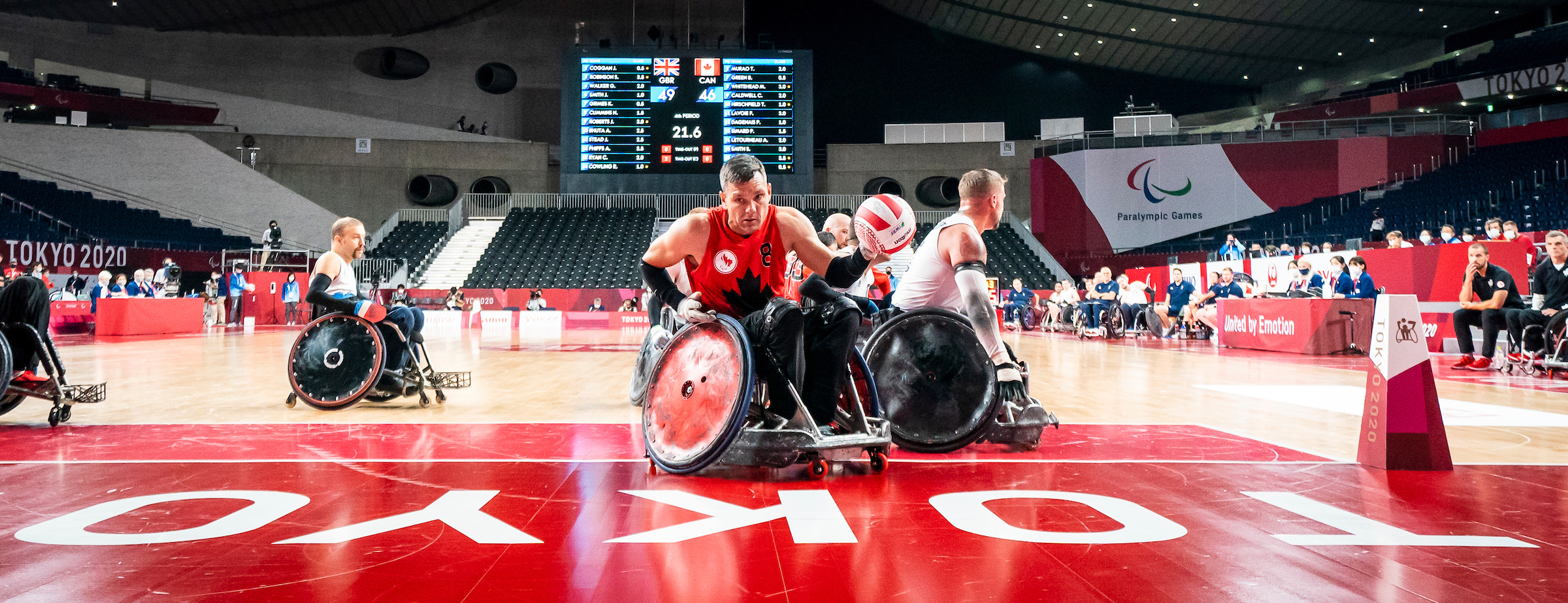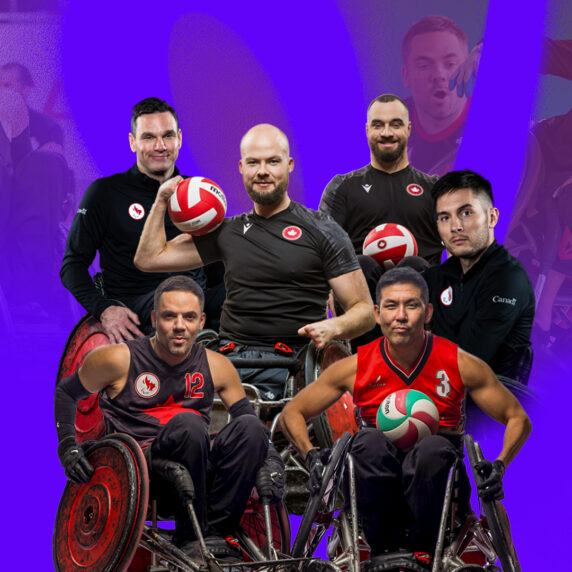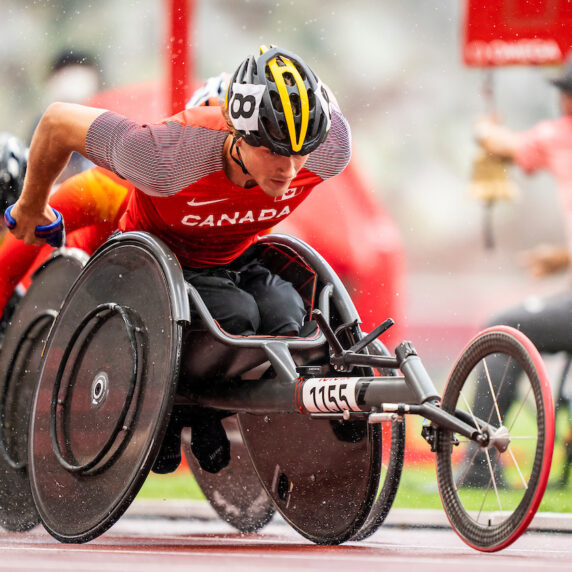What is Wheelchair Rugby?
The object of the game is to carry the ball across the opposing team’s goal line. Two wheels must cross the goal line for a goal to count, and the player must have firm control of the ball when he or she crosses the line. All wheelchair rugby players compete in manual wheelchairs. Players must meet the minimum disability criteria of the sport and must be classifiable under the sport classification rules. For Rules & Equipment, click here.
Who Can Play?
To be eligible to play, individuals must have a disability that affects both the arms and the legs. They must also be physically capable of propelling a manual wheelchair with their arms. Athletes with neurological disabilities must have at least three limbs with limited functions; athletes with non-neurological disabilities must have limited function in all four limbs. The majority of wheelchair rugby players have spinal cord injuries that have resulted in full or partial paralysis of the legs and partial paralysis of the arms. Other disability groups who are represented include polio, cerebral palsy, some forms of muscular dystrophy, dysmelia, amputations, and other neurological conditions such as Guillain-Barré Syndrome. Men and women are classified equally and compete on the same teams; there are no separate men’s and women’s competitions. However, teams are allowed an additional 0.5 points for each woman who is playing in the line-up on the court.




